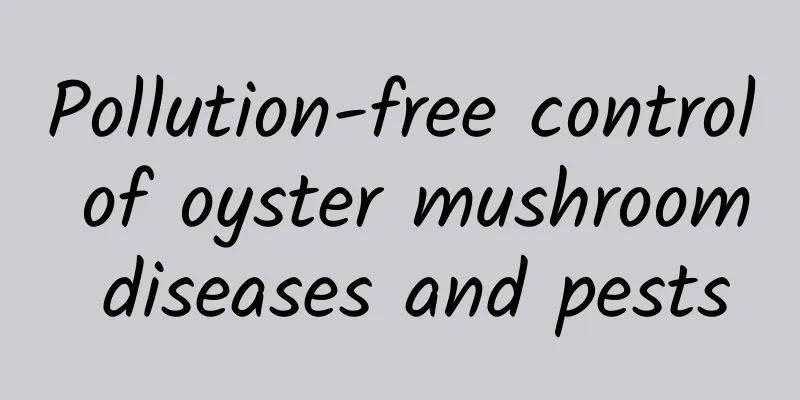Pollution-free control of oyster mushroom diseases and pests

|
Today I will introduce to you the pollution-free prevention and control methods of oyster mushroom diseases and insect pests. In fact, we often use them when growing oyster mushrooms: 1. Environmental hygieneThe tools and materials used for edible fungus cultivation can be moved into the mushroom shed and sterilized and killed with formaldehyde in a closed fumigation process to eliminate harmful bacteria and insect sources. 2. Raw material processing.It is best to pre-treat the raw materials used for the cultivation of oyster mushrooms before use. You can choose to expose them to the sun for 2 to 3 days in sunny weather to kill pathogens and insect eggs with ultraviolet rays. You can also ferment the culture medium to kill low-temperature microorganisms and insect eggs with bio-heat, so that the pathogens and insect eggs in the culture medium are reduced to the lowest level, reducing the chance of infection. 3. Ecological regulation,Strong alkaline antibacterial microorganisms prefer a neutral to slightly acidic environment. Different fungi have different tolerance to reducing environments, and the difference is large. The alkali tolerance of Pleurotus ostreatus is much greater than that of common bacteria. We can take the approach of increasing the alkalinity of the culture medium to slow down or inhibit the growth of bacteria without affecting the growth of Pleurotus ostreatus hyphae, so that the Pleurotus ostreatus hyphae can quickly fill the culture medium and limit the bacteria. Practice has shown that adding 3% to 4% quicklime to the culture medium can significantly inhibit the growth of bacteria, while having almost no effect on Pleurotus ostreatus hyphae. 4. Oxygen-controlling bacteriaOyster mushroom is an aerobic fungus, but its mycelium has a strong tolerance to carbon dioxide. Properly limiting the supply of oxygen has a better effect on controlling bacteria. When filling the bag for cultivation, the tightness should be appropriate, and the ventilation holes should be punched at the bacteria seed, so that the carbon dioxide concentration in the material is high, which inhibits the reproduction of bacteria in the material and achieves the purpose of controlling bacteria. 5. After harvestAfter harvesting the mushrooms, remove the residual roots, fallen culture medium and shrunken young mushrooms in time to avoid the growth of bacteria. If bacteria are found on the surface of the material, use a brush dipped in concentrated lime water to gently wipe it off, and apply concentrated lime water to the place where bacteria grow to prevent further spread of bacteria. |
<<: Brown spot disease of oyster mushroom
>>: Common diseases of Oyster mushroom and their prevention and treatment methods
Recommend
The efficacy and function of pigeon eggs
In terms of poultry, pigeons and doves are both n...
The benefits of eating black olives
Black olives are also called black olives or wood...
The difference between kale and choy sum
Many people see two types of vegetables that look...
Benefits of eating peaches for pregnant women
Pregnant women are very careful about what they e...
The benefits of white lentil porridge
How many of you still remember the effects of whi...
Can cucumber and pear be eaten together?
Pear is the name of a fruit. It is juicy, thin-sk...
Osmanthus roasted pumpkin recipe steps and nutritional value
Osmanthus roasted pumpkin is a very delicious foo...
How is "Report"? Review and website information of "Report"
What is the Allgemeine Zeitung website? Allgemeine...
Top 10 Low-Sugar Fruits List What are the Low-Sugar Fruits?
As people's living standards have improved, h...
The difference between longan and longan
Everyone is familiar with longan and longan. They...
Cornmeal dumpling soup
The food I recommend to you today is corn noodle ...
Types and pictures of Begonia flowers
Whether in ancient times or in today's societ...
Black kidney bean benefits and effects
Today I will introduce to you the nutritional val...
How to make Northeastern pickled cabbage stewed with vermicelli How to make pickled cabbage stewed with vermicelli
The specialty of Northeast China, stewed sauerkra...
How is JTEKT? JTEKT reviews and website information
What is JTEKT? JTEKT is a company that provides te...









